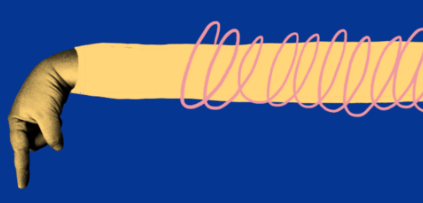
Deepest Man
Opening Night: May 22, 2014
Closing: June 14, 2014
Theater: 3LD Art & Technology Center
Deepest Man is a dark, new-age-science, multimedia theatrical production. It delves into the controversial and amazing properties of water: “Water has consciousness”, “Water has memory”. Searching for release from his great grief, the lead character discovers the alluring comfort of an extreme sport, freediving. He ultimately finds solace through an intimate relationship with a famous television talk show host. He believes she speaks directly to him, through his television. Dogma versus delusion, science versus metaphysics, disaster capitalists versus survivors, Deepest Man weaves a complex narrative flowing from the mind of a man teetering on the edge.
BUY TICKETSREAD THE REVIEWS:
May 31, 2014
Deepest Man is billed as a play where “extreme sports, celebrity worship, and new age science collide.” The promotional materials for the show tell us that “Dr Hazzardville Sommers loses his wife in a swimming accident, and then seeks spiritual guidance through a famous television talk show host and the sport of free diving.” I went to the performance expecting to join the rest of the audience in “total immersion in his underwater fantasy world.” I have to admit, the holograms that appeared in the center of the floor at 3LD Art and Technology Center last night, on the opening night of Deepest Man, were spectacular. JoEllen Dolan and Grant McDonald (video design) have crafted holographic stacks of monitors, divers, floating women, and blazing images of Dr Hazzardville Sommers with his face in a bowl of water. It was a visual experience I won’t forget anytime soon.
READ THE REVIEWMay 30, 2014
Deepest Man charts the inner journey of Dr. Sommers (Spencer Barros) as he explores the grief caused by his wife’s death. A voiceover greets the audience as they enter the space, explaining the physical effects and some of the spiritual motivations for the extreme sport of deep free-diving. A minimalist glass sink and table occupy the front playing space, behind it the transparent plastic screen that will later make holographic projections possible, and beyond this another larger playing space. Nurses (Libby Skala & Miguel Reis) and another doctor (Vienna Carroll) enter with Dr. Sommers, gossiping amongst each other. A few lines reveal that Sommers is in this instance a patient, and that this is some sort of mental ward. An alarm sounds calling away the nurses and the attending doctor. The voiceover returns, this time more pleading than informative. Sommers approaches the sink, and at the insistence of this voice, places his face in the water. Projections on the side of the stage show the space flooding with the water; we are joining Sommers on his aquatic spiritual journey.
READ THE REVIEWMay 29, 2014
Deepest Man is a dream play that unfolds in the last few moments of its protagonist’s life. Dr. Hazzardville Sommers has been institutionalized following his wife’s death, apparently by drowning. Brought into his room by a trio of nurses, he appears to be almost catatonic. Consumed with guilt — he is convinced he should have saved his wife, even though he wasn’t with her when it happened — he decides to follow her by putting his head in the sink. What follows is an extended end-of-life hallucination that blends images of water, references to freestyle diving, something called “divine channel surfing,” a Hurricane Katrina-like tempest, and testimonials by a trio of guilt-plagued storm survivors, all of it overseen and/or narrated by a talk show host named Des’Ree Collins. These are Hazzardville’s personal memories combined with bits of various broadcasts from the hospital’s television, twisted and reformed into unexpected shapes, in the way that our dreams tend to do, making a kind of meditation on memory, love, guilt, spirituality, and water in its many forms. The latter property assumes many guises: On the one hand, we are told repeatedly that each of us is 90% water; on the other, we see whole landscapes wiped out by storm surges.
READ THE REVIEWMay 30, 2014
The Twilight Zone meets media critique meets psychological portraiture in James Scruggs’s Deepest Man, a thought-provoking experiment at the 3LD Art & Technology Center. Given that the show comes from 3-Legged Dog — a company known for integrating performance, video and effects — it is unsurprising that the piece, loaded with abstraction and supernatural traces, is a visual marvel. A desolate ambience is established by David Ogle’s set, encompassing the entire room. Crumbling pasteboard suggesting water damage constitutes the walls at left and right of the audience, while spotty, tarpaulin-like cloth is draped on their seats. The stage has three planes: one near, offering action in the tangible present; one comprising scrims on which hologram-like images are projected; and one extending back about 30 feet, in which dreamlike tableaus are staged.
READ THE REVIEW


















